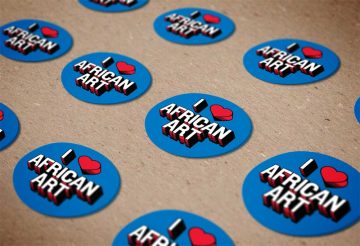
Caravans of Gold home | Saharan Echoes | Driving Desires: Gold and Salt | The Long Reach of the Sahara |
Archaeological Imagination Station: Giving Context to Fragments / Hi Videos | Saharan Frontiers | Shifting Away from the Sahara | Teachers Guide
Caravans of Gold calls on what archaeologists have termed “the archaeological imagination”—the act of recapturing the past through surviving traces—to present a critical rethinking of the medieval period. Here, rare and precious archaeological fragments are seen side by side, bringing new understanding to complete works of art from the medieval period. The exhibition responds to pressing questions of our time: How can an art museum represent a past that is notable for its absences? How can museums make sense of a material legacy that exists only in fragments? What role does imagination play in resurrecting the past?
Medieval Africa begins with the spread of Islam in the 8th century C.E. and recedes with the arrival of Europeans along the continent’s Atlantic Coast at the end of the 15th century. During this era, the Sahara Desert was the center of a global network of exchange. As networks spread, so too did cultural practices, fostering the broad circulation of distinctive Saharan aesthetic and intellectual traditions connected to Islam.
The reach of trans-Saharan exchange is revealed in the fragments excavated from archaeological sites, now uninhabited, that were once vibrant communities. In this exhibition, these “fragments in time” are placed alongside works of art and other materials that allow us to imagine them as they once were. They are the starting point for reimagining the medieval past—and for seeing the present in a new light.
Credits
Caravans of Gold, Fragments in Time is organized by the Block Museum of Art, Northwestern University, and is curated by Kathleen Bickford Berzock, Associate Director of Curatorial Affairs at the Block Museum, with input from an interdisciplinary, international team of advisors. The presentation at the National Museum of African Art has been overseen by Kevin D. Dumouchelle.
Caravans of Gold has been made possible in part by two major grants from the National Endowment for the Humanities: Exploring the human endeavor. The exhibition is also generously supported in part by Northwestern University’s Buffett Institute for Global Studies. The exhibition’s travel to the National Museum of African Art, Smithsonian Institution, is made possible by the major support of five anonymous donors and generous contributions by Sonny and Michelle Kalsi, Sukey and Michael Novogratz, Susie Hahn and Jon Roy, Mustafa A. Jama, Marti Meyerson and Jamie Hooper, Cory and Diane Pulfrey, Owen and Jennifer Thomas, Stephen Trevor and Stephanie Hunt, and Zoe Cruz. Additional support is provided by the National Endowment for the Arts, the Myers Foundations, and the Sandra L. Riggs Publications Fund at the Block Museum of Art.
Possibly Abraham Cresques
1325–1387 C.E., b. Palma, Majorca, Spain
Worked in Palma, Majorca
Catalan Atlas
1375
Illuminated parchment mounted on six wooden panels
Bibliothèque nationale de France, Paris, Ms. Espagnol 30

Any views, findings, conclusions, or recommendations expressed in this exhibition do not necessarily represent those of the National Endowment for the Humanities.

